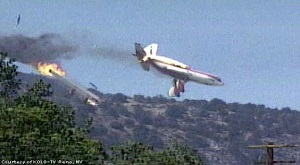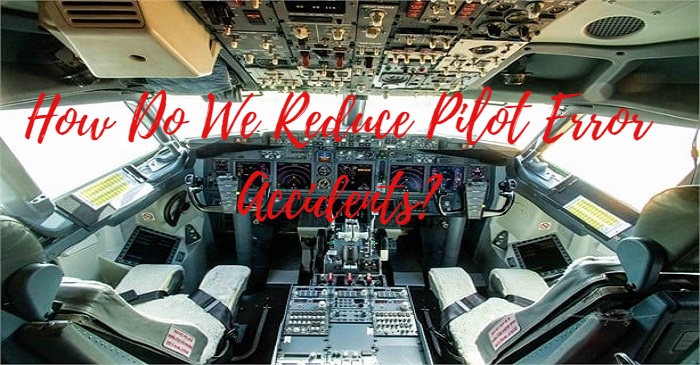
Have you ever wondered why almost every fatal aircraft accident becomes a pilot error? Many times fatal accidents leave us baffled with no closure, especially if we know people who perished. The questions are endless, but the best question is, “How Do We Reduce Pilot Error Accidents?”
How Do We Reduce Pilot Error Accidents?
Better training and training methods can reduce pilot error accidents. Aviation professions require continuous training, so incorporating new training is easy. Gaining experience is essential. When coupled with increased knowledge, it becomes extremely powerful.
How Do We Reduce Pilot Error Accidents?
1. What is Pilot Error
When a pilot takes on responsibility for an aircraft and its contents, including lives, and makes a decision that results in a loss of control or loss of situational awareness that results in an accident, is pilot error. The National Transportation Safety Board considers almost any accident that doesn’t have a decisive cause as pilot error.
That assertion of the pilot being the fault is most distressing for all survivors and very hard to swallow when you know the pilot(s), and are aware of their skill level.
A quotation of unknown origin that has stuck in my head since I read it says, “Aviation of itself is totally unforgiving of any inability, incapacity or neglect.”
They blame pilot error for 80% of all accidents, inclusive of pilots, mechanics, air traffic controllers, and all who are directly involved in aircraft operations. 20% are equipment failures.
We do not consider pilots who deliberately crash an aircraft in the pilot error category, as it does not consider these incidents accidents.
2. Experience.
“Experience is a dear teacher.”
I can tell you that really learning to fly an airplane is the only way to become a safer pilot.
Learning to “feel” the aircraft so that you know what a maneuver “feels” like allows a pilot to be aware of a correct recovery and react promptly without hesitation.
I was not too fond of simulators because there was no “feel” even in full-motion simulators. They do serve their purpose, and you may practice until you know.
Repeated practice and training become ingrained in pilots.
It is difficult to simulate an airplane in icing conditions that are unmanageable without a full motion simulator.
Classroom information on what to expect to happen and how to react must be adequate. Tail stalls are a great example of this.
Sometimes this is not adequate, as shown by the Great Lakes crash where both pilots had never flown an aircraft in ice!
Severe ice tested me one early morning while flying from Denver Stapleton airport to Scottsbluff, Nebraska, with a load of Airborne Express freight.
Had I not been completely aware of the seriousness of the airframe ice, and had no training in tail stalls, I would have crashed that morning.
I truly had an Angel on my wing that day.
3. Stick And Rudder Flying.
Going to the basics of flying an airplane and learning to make coordinated turns becomes an important aspect of the safety of flight.
Many pilots I have trained over the years had simply forgotten the rudders except in cross-wind landings. That was somewhat challenging too especially during an instrument landing.
Many of these pilots also could not perform a simple stall properly which I have always felt was a fear of stalls. That failure in flight training is called a poor instructor.
I do not blame individual instructors for this. It is more a failure of the FAA and Examiners some of who are afraid of stalls too. Whatever the cause the result is a large number of loss of control accidents.
I do recommend reading a refresher on stick and rudder flying from Redbird Flight Simulation, here.
When turns are coordinated at all times the flight is a much safer event.
4. Pilot Error In Arrival And Departure.
Most loss-of-control accidents are during take-off and landing. The most critical phases of flight.
The Federal Aviation Administration Regulations are clear in Part 91 Section 91.3 Paragraph (a),
The pilot in command of an aircraft is directly responsible for and is the final authority as to, the operation of that aircraft.
Since take-offs and landings are major faults why are we still continuing to teach everything the same way? I find that to be astonishing because throughout my training inclusive of and especially my ATP checkride every take-off and landing needed to be as near perfect as possible.
The point is that I had the training and expertise to complete the checkride and had I failed I would have possibly been fired or returned for further training. I better perform and react properly in flight.
As an Airline Check Airman and Instructor, I did not allow new pilots or experienced Flight Officers to fail. Yet these horrific accidents continue year after year.
5. Mental And Physical Aspects In Pilot Error.
How do we find a way to evaluate a pilot’s fitness except for obvious actions and behavior? I have never once been evaluated by any professional mental health expert.
If I had I am sure they would have deemed me crazy for wanting to hurl myself through the air in a metal can with wings!
Joking aside when you fly the line you are scrutinized continuously through tests, tests, and more tests physical as well as the ability to fly and make good decisions.
Airline pilots are the most intensively tested and evaluated than any occupation.
Final Thoughts.
It is evident to me that we need some different ways to reduce pilot errors. Considering all the deaths that pilot error is the cause we definitely need improvement,
I have seen pilots die because they fixated on a light bulb and they forgot to fly the plane and a pilot who had a runaway electric trim and failed to follow the first rule of aviation. It applies to both examples, FLY THE AIRPLANE.
The accidents that happen that leave us all wondering are the ones when competent pilots and capable aircraft crash for no logical reason. We cannot rule out a medical or psychological problem.
Those accidents that the NTSB cannot find a logical cause fall into the pilot error category. Where else can they be explained? Yet a pilot that crashes intentionally is not classified as an accident so pilot error is out the window!
We need to find solutions to this problem And it takes us all.
This deadly problem needs help.
Related: Is Pilot Proficiency Important In Aviation? (3 Points On Safety)
Please comment or add to the discussion. It is appreciated.
